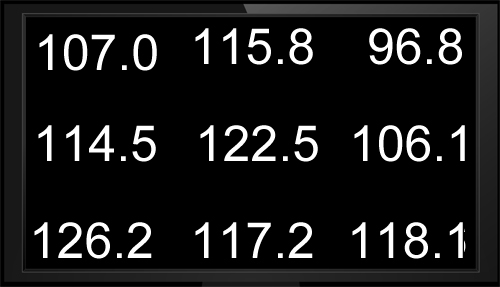CCFL Versus LED: Is There A Downside To Going Green?
With the display market quickly transitioning to LED backlighting, are we losing anything in the move away from CCFL? Sure, LED is supposed to be greener, with richer contrast and color...but is it? Before you jump to conclusions, check out our review.
Quality Tests: BenQ EW2420
Fresh from the cardboard, BenQ’s LED display shows settings of 100 brightness, only 50 contrast, and “normal” mode colors of R88/G92/B88. This had us running a bit warm at 7000K and a center luminance of 244.4 cd/m2 (0.1 cd/m2 minimum). We observed some separation in the color channel graph, with the red coming on a bit stronger than the others, but keep in mind that this is relative. It’s OK for the lines to diverge a bit so long as you get the desired results at the end.
Our calibrated results found the BenQ running with a 65 contrast, R86/G80/B78 color values, and an impressively low brightness of 40. This found us spot on at 6500K and a luminance of 120.5 cd/m2. Keep in mind that just by running through this calibration, we’re getting an image better tuned to what the eye wants and needs and we’re consuming at least 35% less power in the process.
Luminance stays fairly even across this LCD screen. Even the brightest corner (lower-right) is within reach of the 120 cd/m2 optimum. The 96.8 cd/m2 isn’t great, but it’s also not that bad, and the disparity wasn’t striking enough to be noticed with the naked eye in any of our tests.
BenQ does OK on our gamut test. You can see it excelling in the yellows and blues, but it falls off enough in the reds to end up with an overall volume of 879 349, landing it in the lower end of our group.
After the gamut results, the Delta-E numbers (1.86 average, 8.29 maximum) may come as no surprise. The monitor does well in grayscale representation, but that teal score (or whatever that color is—any color pros out there?) is through the roof. You may not notice this while watching a movie, but it could come back to bite you in editing work.
Get Tom's Hardware's best news and in-depth reviews, straight to your inbox.
Current page: Quality Tests: BenQ EW2420
Prev Page Quality Tests: Asus VW246 And Analysis Next Page Quality Tests: Dell ST2310F

